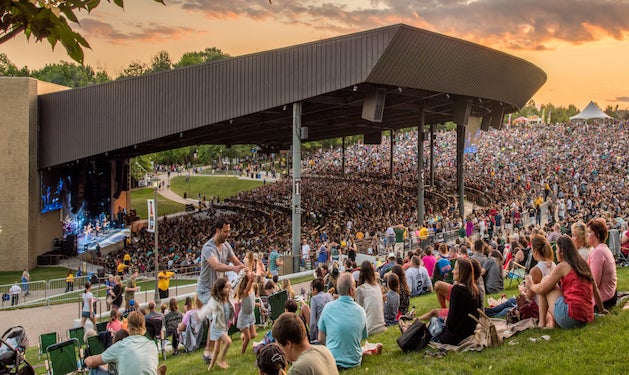Remembering the Kent State Shootings, 50 Years Later
Museum at Bethel Woods Senior Curator Neal Hitch discusses the 50th anniversary of the Kent State shootings and the role music served in protest movements.
Tin soldiers and Nixon coming,
We’re finally on our own,
This summer I hear the drumming,
Four dead in Ohio.
- Neil Young
Today is the 50th anniversary of the Kent State shootings.
On May 4, 1970, four students were killed and nine others wounded when several Ohio National Guard soldiers opened fire during a mass student protest of the escalation of the war in Vietnam. In the days following, protests erupted on campuses all across the country in the largest student strike in our nation’s history. Over four million students participated, closing hundreds of universities. Five days after the shootings, 100,000 people demonstrated in Washington, DC against the killing of unarmed student protesters.
Neil Young's "Ohio"
Neil Young wrote the song “Ohio” after seeing the Life magazine article about the shootings, which had hit stands on May 15 with the story featured on the cover. He immediately wrote the song. The next week, members of Crosby, Stills, Nash, and Young met in LA and recorded it in just a few takes. The song was released as a single, wrapped in a sleeve that reprinted Article I. of the Bill of Rights: “Congress shall make no law respecting an establishment of religion, or prohibiting the free exercise thereof, or abridging the freedom of speech; or the right of the people to peaceably assemble.”
The song was getting radio play within three weeks of the events at Kent State. By the end of June 1970, the song was charting, even though many AM stations would not play it because it questioned the policies of Richard Nixon. By the week of July 11, it had reached the Top 40. The CSNY song “Teach Your Children” was also still on the charts, with the band having two songs in heavy rotation.
More Artists Inspired
Several other songs were written about the Kent State shootings, and the event would continue to reverberate throughout music for a decade to come. Chrissie Hynde was an 18-year-old art student at Kent State and witnessed the shootings. She would go on to be a founding member of the Pretenders, entered into the Rock & Roll Hall of Fame in 2005. Gerald Casale was also a student and was standing alongside friends, one of whom would be killed in the shooting. The event would be transforming - his band Devo would move from being a joke to writing songs centered around social critic.
Music was a central vehicle for protest movements throughout the 1960s. During the 1970s, however, many changes began to occur that affected this music: the end of the war, the aging of the counterculture, the commercialization of the record industry. Neil Young’s “Ohio” is considered to be the last great protest song.
Further Listening
“Ohio,” Crosby, Stills, Nash, and Young, 1970
“American Woman,” The Guess Who, 1970. Number one song in America the week of May 4, 1970.
“Mama Told Me,” Three Dog Night, 1970. Number one song in America July 1970.
“Jackson-Kent Blues,” Steve Miller Band, 1970. Written in response to the killing of two students at Jackson State University, a historically black college, just 10 days after the Kent State Shootings. This event did not receive the same amount of national media coverage.
“Student Demonstration Time,” The Beach Boys, 1971. Written in response to the Kent State Shootings.
“The Knife,” Genesis, 1970. Written from the perspective of a National Guard soldier during the Kent State Shooting.
“Teach Your Children Well,” Glee Cast, 2015. CSNY Cover. During the first week of August 1970, Crosby Stills Nash and Young were charting “Teach Your Children” and “Ohio” at 17 and 18 on the Top 40.
“My City was Gone,” Pretenders, 1982
“I’ll Stand BY You,” Pretenders, 1994.
“Satisfaction,” Devo, 1977. Rolling Stones cover.
“Beautiful World,” Devo, 1981.
